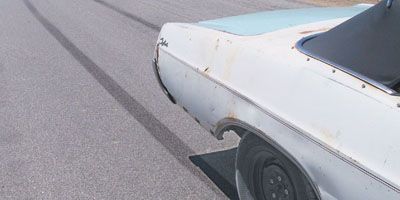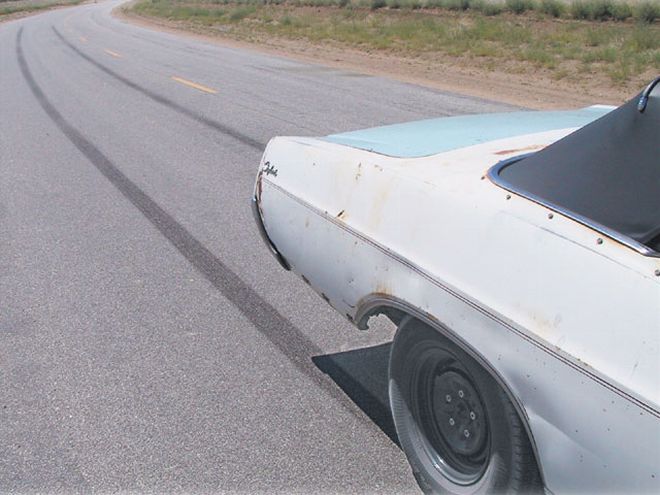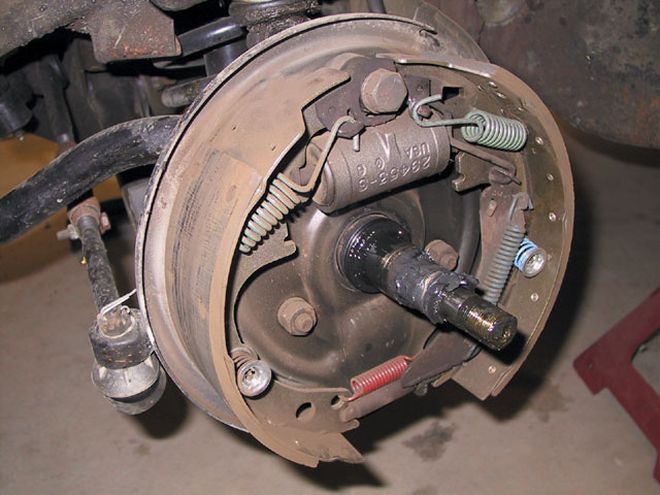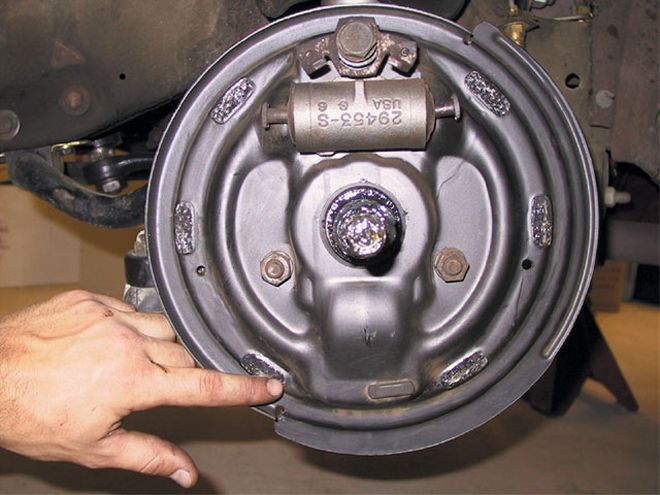

Renault invented the basic drum brake in 1902. We thought you all should know that, as if there already weren't enough reasons to swap over to discs. But some gearheads do prefer to keep their drum brakes in active stopping duty, whether it's for originality's sake, friction-free dragstrip use, or simply because the drums work well enough to spend money and time on other things. Such was the case with our '66 Buick GS. After entirely rebuilding its stock nonassisted 9.5-inch diameter four-wheel drum-brake system, the car had a confident, hard pedal and stopped reasonably well-better if you squatted a few hundred pounds each day for practice. And even after a few spirited runs through a local high-elevation twisty two-laner, the drums resisted fading admirably.
 The Buick's drums were freshly rebuilt, and it showed when we removed the drums to inspect 'em. The braking surfaces of the shoes and the drums were smooth and glaze-free, so we didn't feel it was necessary to turn the drums again before installing the Praise shoes
The Buick's drums were freshly rebuilt, and it showed when we removed the drums to inspect 'em. The braking surfaces of the shoes and the drums were smooth and glaze-free, so we didn't feel it was necessary to turn the drums again before installing the Praise shoes
While there were no complaints concerning the brakes' stopping power, they did have an unpredictably evil habit of locking up. This became glaringly obvious after we went out to the high desert for a preliminary 60-to-0-mph brake test. The scorched pavement and warm tires made for poor adhesion and transformed our confidently braked GS into a dicey toboggan ride. The brakes locked up immediately upon application, and we found that the brain/leg combination is a poor substitute for ABS. After wasting considerable tire tread tattooing the pavement with straight lines, squiggly lines, and dotted lines, we cruised over to Marlan's underground desert fortress and swapped the organic front shoes with a set of trick linings from Praise Dyno Brake. We'd heard that the Praise lining formula improves fade resistance and bolsters stopping power, but would they keep our GS from locking up and improve its stopping distance?
In the interest of keeping this upgrade on the cheap, we retained the stock organic shoes on the rear brakes since the front brakes contribute most of the stopping forces. After installing the Praise shoes on the front of the Buick, we followed Praise's procedure for bedding in the new linings (25 medium-effort stops from 30 mph, allowing a minute of cooling between stops-time consuming, but important). Back at the desert test track, we accelerated through the gears to 60 mph then quickly pumped the brakes. We weren't exactly impressed with the 226-foot stopping distance, which was exactly the distance attained on the first stop with the old brake shoes. The next stop was an equally unexciting 228 feet. Time for a change in technique.
 After pulling off the stock shoes and hardware, be sure to lubricate the six wear pads that contact the brake shoes. We used antiseize because it won't lose its viscosity at high temperatures and ooze onto the braking surface. We had completely disassembled, bead-blasted, and painted the front suspension components a few years ago, and the cleanliness of the brake system made the shoe swap super easy.
After pulling off the stock shoes and hardware, be sure to lubricate the six wear pads that contact the brake shoes. We used antiseize because it won't lose its viscosity at high temperatures and ooze onto the braking surface. We had completely disassembled, bead-blasted, and painted the front suspension components a few years ago, and the cleanliness of the brake system made the shoe swap super easy.
Instead of pumping the pedal on the third test, we hammered the pedal hard and didn't let up, resulting in a 196-foot stop with a slight lockup at 15-10 mph. That's an improvement, but could we do better if we prevented the tires from skidding? The next stop was done in a similar manner, but we pumped the brakes upon lockup and stopped in 206 feet. The last few tests were all-out max-effort stops, yielding 192, 194, and 191 feet, even with the recurring low-speed lockup. We decided to throw out the results of the first two stops because we hadn't yet perfected our stopping technique. We think the Praise shoes are a pretty good deal, considering the cost ($90) and the time needed for installation (30 minutes).
The real brake test came on the return trip to Los Angeles when we made a brutal panic stop to avoid a collision on I-5. It's human nature to wonder "what if," and for that reason we're sold on the Praise linings-at least until we can afford a disc upgrade.
They're Worth It
If you're set on keeping drum brakes on your car, the Praise shoes are a must-have. The 16 percent improvement in 60-to-0-mph braking distance could be the difference between avoidance and collision. And you sure can't complain about the time and effort it takes to slap 'em on the car. As you can see from the photo, all testing was done on an approved test track. Don't try this at home, kids. All test data was measured from 60-to-0-mph, with our indispensable G-tech performance meter.